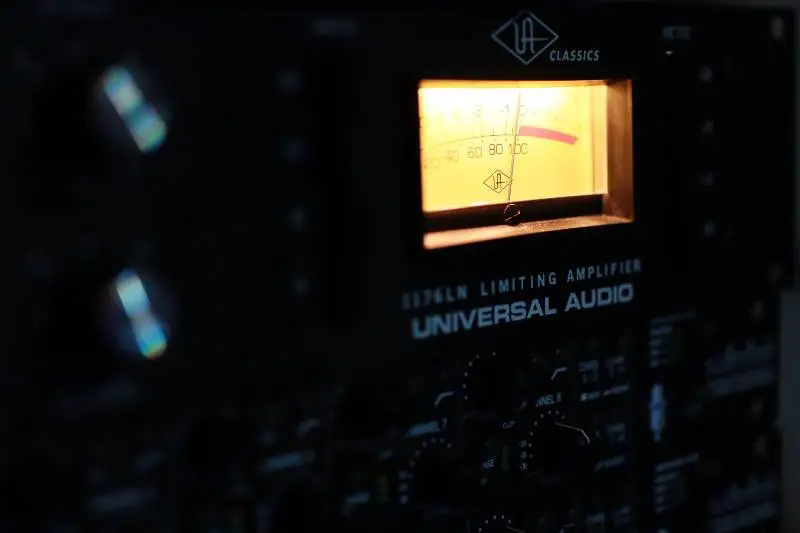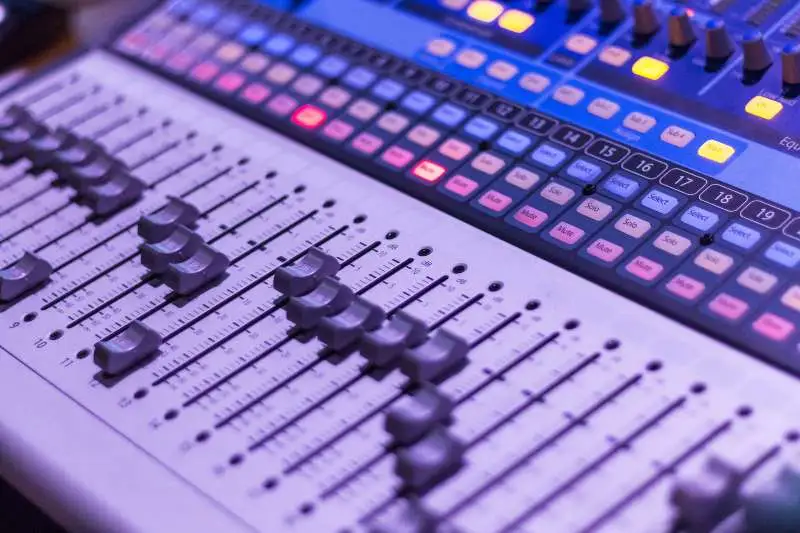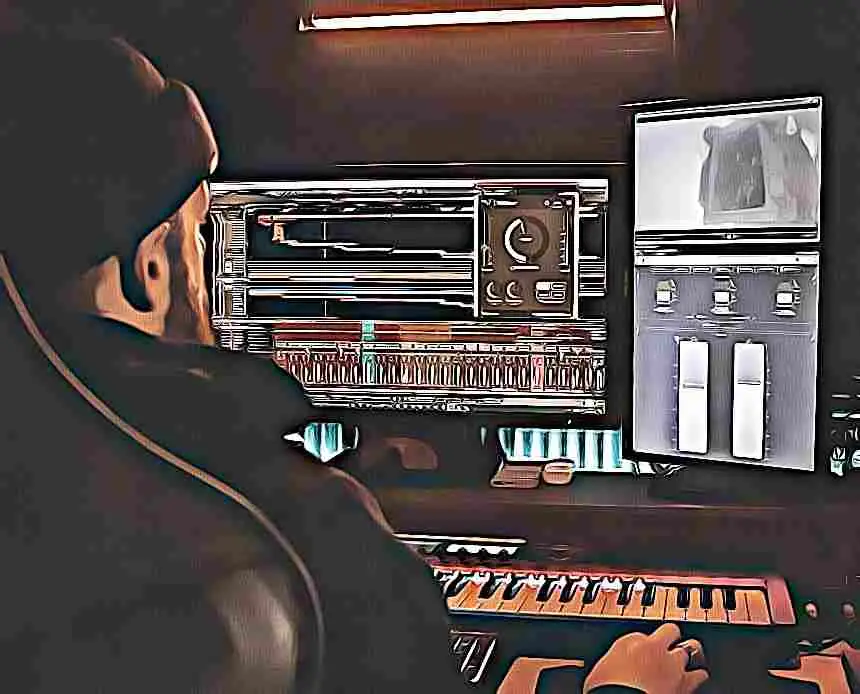Every mastering engineer has their own mastering process - That's part of what makes mastering an art form. That being said, it's important to understand different mastering philosophies so that you can communicate effectively throughout the music industry. Today, we'll be decoding stem mastering and detail how beginners can get started with their own stem mastering session.
We'll also break down the specific cases in which an engineer might opt to use stem mastering as opposed traditional final mix mastering. Let's go ahead and get started!
What is Stem Mastering?
So, what is stem mastering exactly? Stem mastering is mastering utilizing multiple stems as opposed to mastering a single stereo file or the entire mix of a song. Your master channel in stem mastering may be divided by each stem's individual track, with each stem receiving its own level of processing.
Stems are composed of individual components all within a similar grouping. Therefore, you might have all of the lead vocals contained within one stem, or a drum stem might contain the kick, snare, and hi-hat sounds within a single file.
The Difference between Stem Mastering and Stereo Mastering
The main difference between stem mastering and stereo mastering is that stereo mastering involves mastering the final stereo mix. Stem mastering takes multiple stems provided by the mixing engineer to complete the process. To put it plainly: the difference between the two types is utilizing stems vs. multitracks . Stem mastering balances mixed stem files, and stereo mastering balances a single stereo mix of multitracks.
The stem mastering model provides mastering engineers greater control over the balance of the track, though ideally most balance issues should be mitigated during the mix session. Drastic changes to the sound of a song shouldn't be made throughout the stem mastering process, these are still reserved for a mix session. A stem mastering session essentially has the same goals as a traditional mastering session: Elevate the final mix, or in this case, mixes of a piece of music.
A mastering engineer will likely engage in both stereo mastering and stem mastering over the course of his or her career. Each piece of music should be approached differently. There's no one right way to master a song. Rather, it will depend greatly on the needs of the sound itself.

How is Stem Mastering Different from Mixing?
Stem mastering is incredibly different from mixing. Stereo mastering and stem mastering are on the same playing field, though stem mastering involves multiple files while stereo mastering is carried out with a single stereo file.
Mixing is a whole stage before mastering even begins. Oftentimes, an engineer has more flexibility during the mixing stage , since this is where the true balance of a song is created. During mixing, an engineer creates the relative volume for each tracks, adds audio effects , and works to get the most balanced stereo file (or stems in the case of stem mastering) as possible.
A mastering engineer is in a completely different headspace than a mixing engineer. Mixing aims to essentially direct how separate parts of a song are played in relation to one another, whereas a mastering engineer usually takes the creative choices made during the mixing stage and elevates them. A mastering engineer is also responsible for providing all necessary music deliverables for playback devices and considering how stem or stereo mastering a song will affect a project as a whole. Both stem and stereo mastering serve as the final stage in the world of music production.

The Stem Mastering Process
The stem mastering process is fairly similar to the traditional mastering process. You'll find that the key difference is the starting point. Stem mastering begins with stems, while traditional mastering starts with a single file. From there, the process follows more or less the same route.
Mastering engineers will use a mastering chain to run through the following standard processes: Gain staging , EQ clean up, compression , stereo imaging, gain reduction, limiting and metering. Mastering engineers might also use certain plugins to tonally enhance their mix. For example, an analog tape plugin may add a little bit of desired harmonic distortion.
Once a master is checked and tested on a variety of playback devices for the desired frequency response, the mastering engineer sends out all of the necessary files to an artist's team or the artist themselves. Since mastering engineers are a part of the final stage in the audio production process, it's important that they have an in depth understand of both traditional and stem mastering.
How Many Stems Should I Use?
The amount of stems you use while stem mastering depends exclusively on the needs of your mastering engineer. Make sure that each of your stems is one stereo file so that your receive your music mastered properly. If you're managing the stem mastering session in your digital audio workstation, you'll have to make a couple of executive decisions to determine what single stem you'd like to elevate, or which stem groups make the most sense.
To start, first ask yourself if you can improve the sonic quality simply by fixing issues in the stereo mix. Stem mastering offers extra balance and control for those who would prefer not to go back into a mixing session or don't have access to a mix. However, it's usually easier to fix obvious issues by altering any technical or balance issues in the mix. Mastering compounds the sound pre-established in the mix.
If you're looking to bring a vocal more forward in a master, for example, you want individual stems for the vocal stem and the other instrumentation in your track. Backup vocals might be another one of the provided stems. Therefore, the amount of stems you use depends greatly on how much extra control you want while bus processing. Make sure that your stems have complete effects processing before your print stems to make your workflow easier. Remember that the mastering process should primarily be focused on stereo imaging, gain reduction, elevating the balance between multiple instrument groups, and enhancing the overall quality and amplitude of a track.
Most creative signal processing should be performed by the mix engineer. If you're not mastering your session, simply clarify with your engineer what they would like in their mastering session. Make sure your multiple stems are all at the preferred sample rate and bit depth as specified by your engineer.

When to Use Stems in Mastering?
A engineer may request to use stems mastering whenever he or she feels like doing so will provide more creative control than a single stereo file. This could be due to issues with the full mix, balance preferences, or for highlighting a certain part of the song as discussed below.
Stem Mastering in Action: Types of Stem Mastering
So, in what scenarios would you see an engineer opt for stem mastering? Here some of the most common types of stem scenarios:
Stem Mastering Based On Frequency Range
Sometimes, different sections of the frequency spectrum require separate compression settings, depending on the full mix provided by the mixing engineer. You may want to use separate stem mix breakdowns of the low, mid, and high frequencies so that you can bring out the best in your final master without say, mudding up the low end for example. Stem mastering can give you more control over the total balance of a stereo track.
Stem Mastering Based On Vocals
Occasionally, there might be an issue with the vocals that makes it difficult to process with the rest of the stems. You can stem master with separate stereo prints of the vocals and all of the other instrumentation to help bring the vocals more forward in a final master, or mitigate any errors in the mix. However, it's always best to go back and fix a mix if you have an opportunity to do so rather than trying to to fix during the stereo mastering process.
Stem Mastering Based on Drums
Drums can often have harsh transients that can get out of hand when compressed heavily during the mastering process. In these cases, a mastering engineer may ask a mix engineer for a separate stem for the drums and the other instrumentation. While it's better to fix any transient issues during the mixing process, this may give a stereo mix more of a balanced feel, especially if an engineer is trying to highlight the drum parts for whatever reason.

Stem Mastering FAQs
Do mastering engineers use stems?
Not all mastering engineers use stems. Traditionally, mastering is done by enhancing and elevating a single stereo audio file rather than manipulating stems. That being said, stem mastering might be needed if an engineer wants more control over the balance of various components within a song.
Can you master a song without stems?
You can certainly master a song without stems. A mastering engineer can simply master utilizing the final mix. In this scenario, it’s especially important that the mix is well balanced before handing it off for mastering. This is because any mistakes in a mix will ultimately be highlighted in the master of a track.
What bit depth should stems be?
Your stems should be exported typically at 24-bits. However, this may vary depending on the final application of your song. If you’re ever in doubt, ask your mastering engineer for specific settings so that you can provide them with the right file type the first time around.
What does it mean to send stems?
Sending stems means that you’re sending individual parts of a track each with their own audio file to your engineer or collaborator. For example, one stem might contain the drum parts, another might contain the vocals, and another may include the synth or bass. It’s also a good idea to clarify with your collaborator what stems they’re looking for.
What is the purpose of creating a mix stem?
Having a mix stem provides a mastering engineer or DJ with more control of a mix without sending over individual multitracks which may be unnecessarily granular for certain purposes. Mix stems provide a happy medium between a full mix and individual audio tracks.
How do I open a stem file?
Most stem files should be in a wav format, so you should have no trouble opening the file on your computer or mobile device simply by clicking on it. You can also drag a stem file directly into your DAW to play it back or manipulate it.
Should stems be in wav or mp3?
You’ll want your stems to be exported as wav files to give your engineer the highest quality audio to mix, master, or manipulate. Wav files generally have much more information and are larger than mp3s. MP3s might be more convenient for mobile playback, but wav files should be used for any professional applications.
What is Stem Creator?
Stem Creator is an application released by Native Instruments that separates audio tracks into separate stems, speeding up a musician’s workflow. This can be super useful for engineers or producers who are constantly exporting mixes for commercial use, mastering, or remixes.
Can you mix a song without stems?
You can mix a song without stems. In fact, most professional mixes are done utilizing multitracks, since they provide more control than stems that have their own baked in processing and balance. Someone may choose to master with stems or the final mix.
What is a stem edit?
A stem edit refers to the process of bouncing a song into stems for remixes, mastering, or further mixing. Stems can also be thought of as submixes since stem files may have baked in processing or audio effects that can inform the next part of the audio production process.
Hopefully, this article made it easier for you to understand the art of stem mastering. As you can see, stem mastering serves as an excellent way to produce well-balanced music for certain songs. Enjoy creating music with this somewhat rare but valuable technique!





